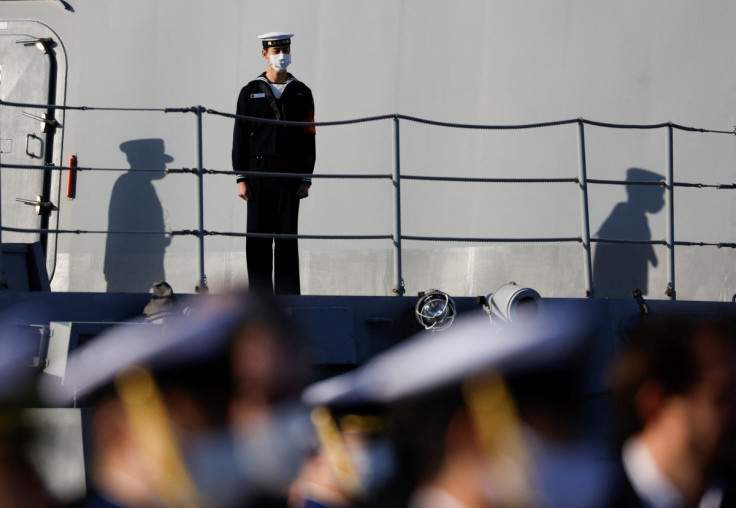Pacifist Japan Unveils Unprecedented $320 Billion Military Build-up

Japan said on Friday it would begin a once-unthinkable $320 billion military build-up that will arm it with missiles capable of striking China and ready it for a sustained conflict as regional tensions and Russia's Ukraine invasion stoke war fears.
Prime Minister Fumio Kishida's government worries that Russia has set a precedent that will encourage China to attack Taiwan, threatening nearby Japanese islands, disrupting supplies of advanced semiconductors and putting a potential stranglehold on sea lanes that supply Middle East oil.
"This is setting a new heading for Japan. If appropriately executed, the Self Defense Forces will be a real, world-class effective force," said Yoji Koda, a former Maritime Self Defense Force admiral, who commanded the Japanese fleet in 2008.
In the sweeping five-year plan, which is pacifist Japan's biggest military build-up since World War Two, the government said it would also stockpile spare parts and other munitions, expand transport capacity and develop cyber warfare capabilities.
A separate national security strategy document promised close cooperation with the United States and other like-minded nations to deter threats to the established international order.
"Russia's invasion of Ukraine is a serious violation of laws that forbid the use of force and has shaken the foundations of the international order," the paper said.
"The strategic challenge posed by China is the biggest Japan has ever faced," it added, also noting that Beijing had not ruled out using force to bring Taiwan under its control.
Meeting Japan-Taiwan Exchange Association Chairman Mitsuo Ohashi in Taipei on Friday, Taiwan President Tsai Ing-wen said she expected greater defence cooperation with Japan.
"We look forward to Taiwan and Japan continuing to create new cooperation achievements in various fields such as national defence and security, the economy, trade, and industrial transformation," the presidential office cited Tsai as saying.
UKRAINE LESSON
"The Ukraine war has shown us the necessity of being able to sustain a fight, and that is something Japan has not so far been prepared for," said Toshimichi Nagaiwa, a retired Air Self-Defense Force general. "Japan is making a late start, it is like we are 200 metres behind in a 400-metre sprint," he added.
China defence spending overtook Japan's at the turn of the century, and now has a military budget more than four times larger.
Kishida's plan will double defence outlays to about 2% of gross domestic product over five years, blowing past a self-imposed 1% spending limit that has been in place since 1976.
It will increase the defence ministry's budget to around a tenth of all public spending at current levels, and will make Japan the world's third-biggest military spender after the United States and China, based on current budgets.
That splurge will provide work to Japanese military equipment makers such as Mitsubishi Heavy Industries (MHI), which is expected to lead development of three of the longer-range missiles that will be part of Japan's new missile force.
MHI will also build Japan's next jet fighter alongside BAE Systems PLC and Leonardo SPA in a joint project between Japan, Britain and Italy announced last week.
Tokyo allocated $5.6 billion for that in the five-year defence programme.
Foreign companies will also benefit. Japan says it wants ship-launched U.S. Tomahawk cruise missiles made by Raytheon Technologies to be part of its new deterrent force.
To pay for the military build-up, Kishida's ruling bloc earlier on Friday said it will raise tobacco, corporate and disaster-reconstruction income taxes. But, with opposition to tax hikes within his ruling Liberal Democratic party still strong, the Japanese leader has yet to say when he will implement those higher rates.
© Copyright Thomson Reuters 2024. All rights reserved.





















